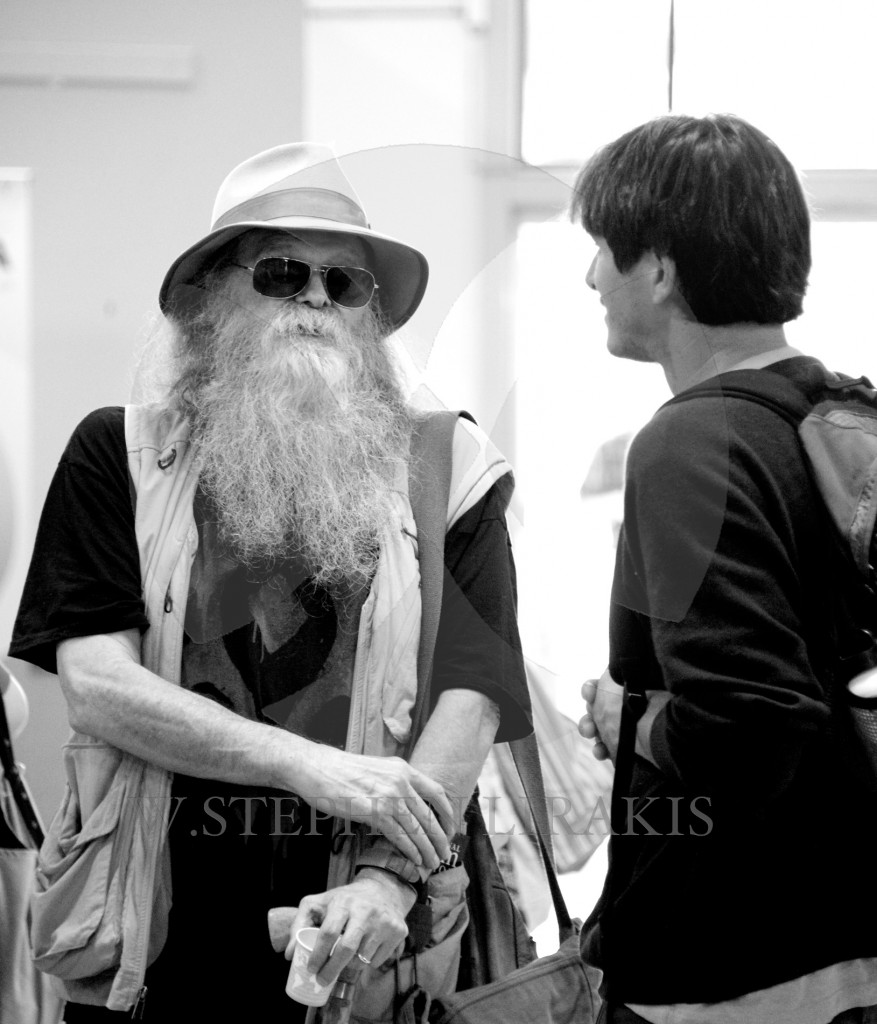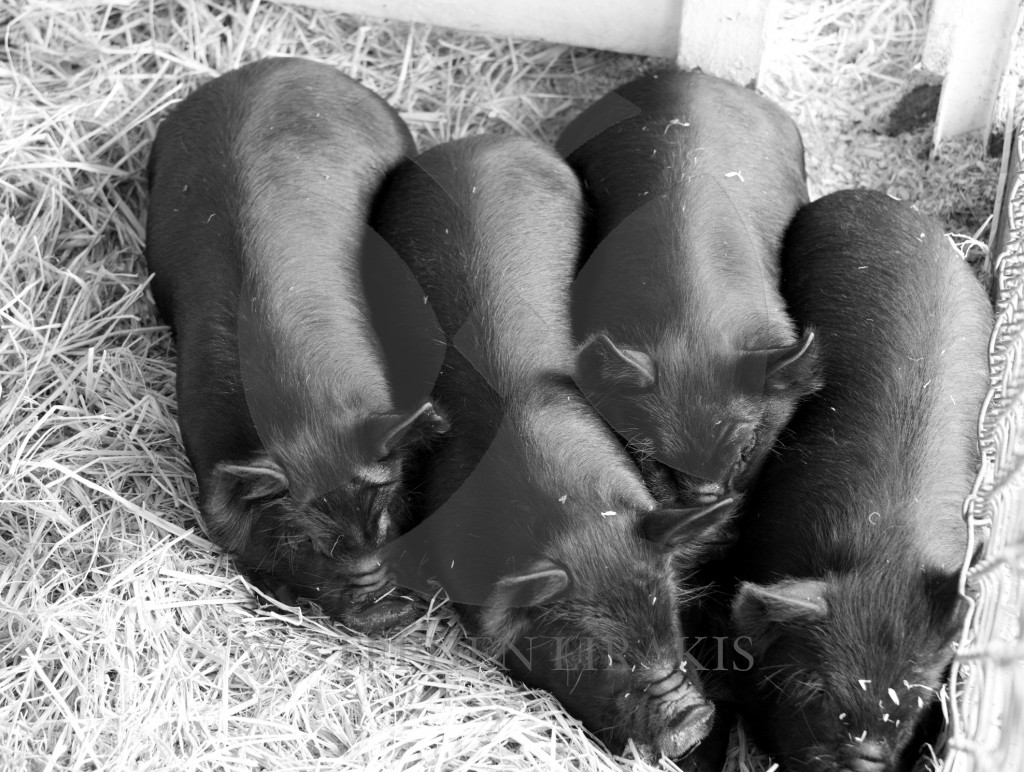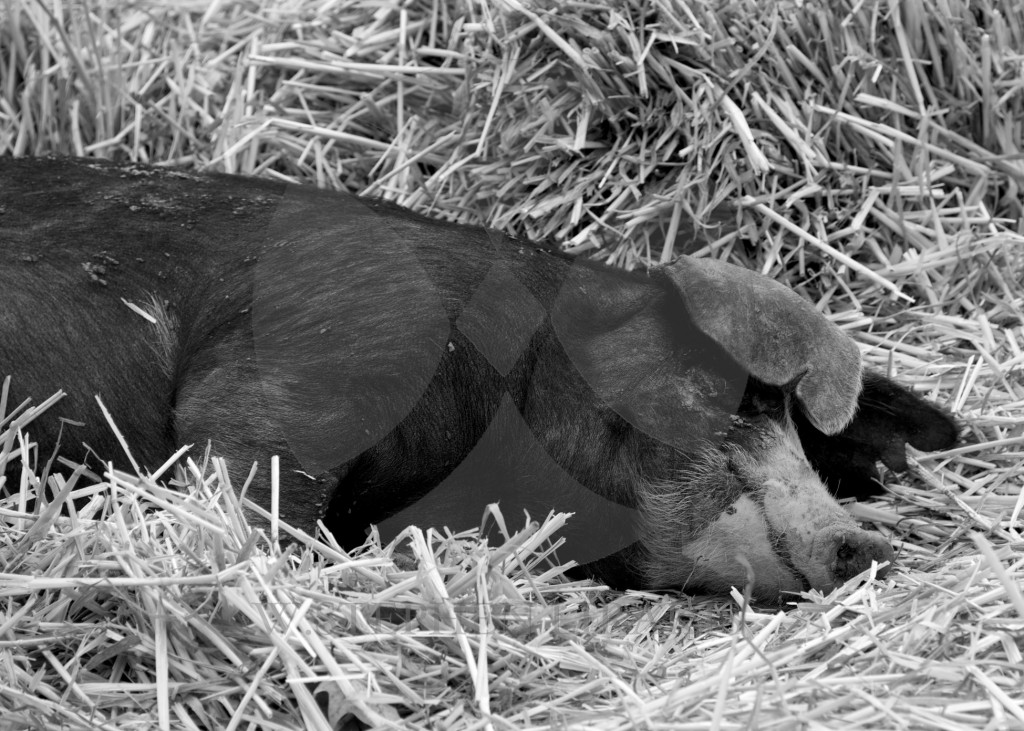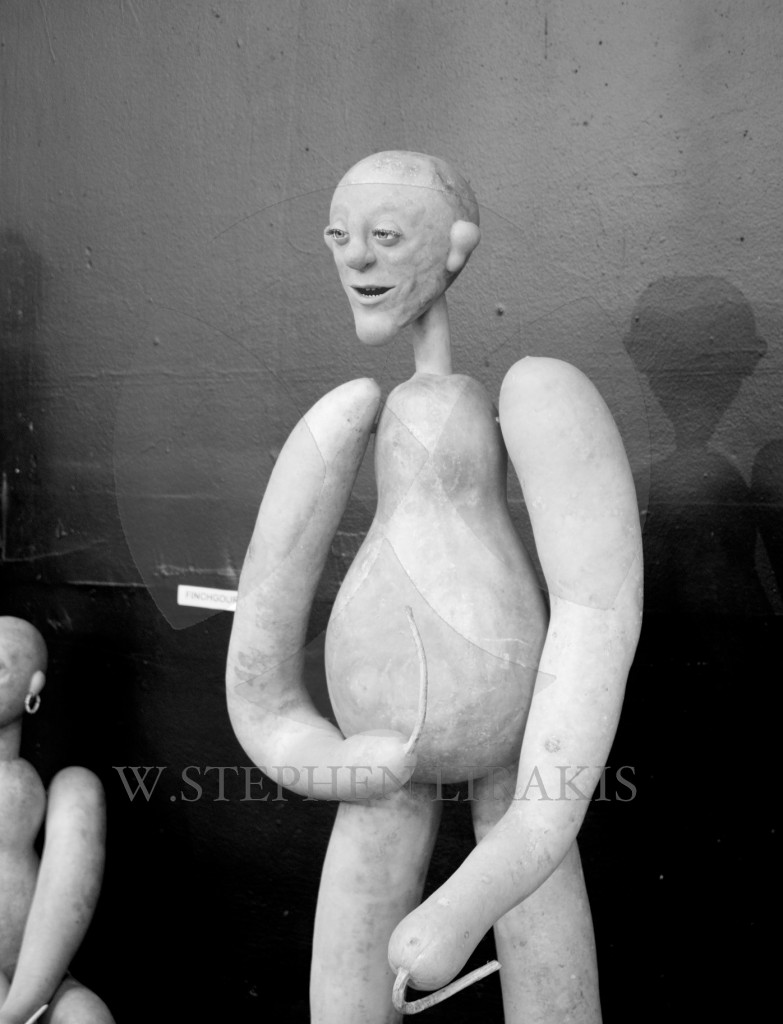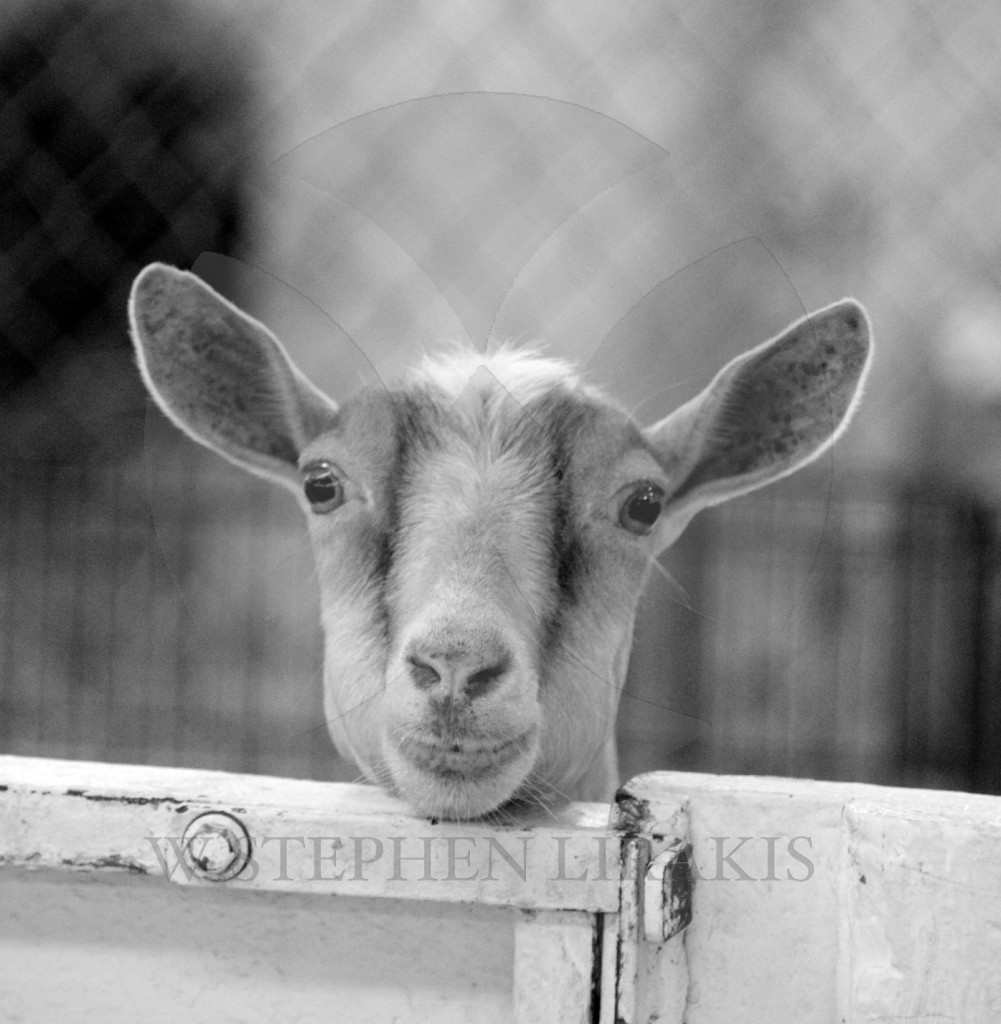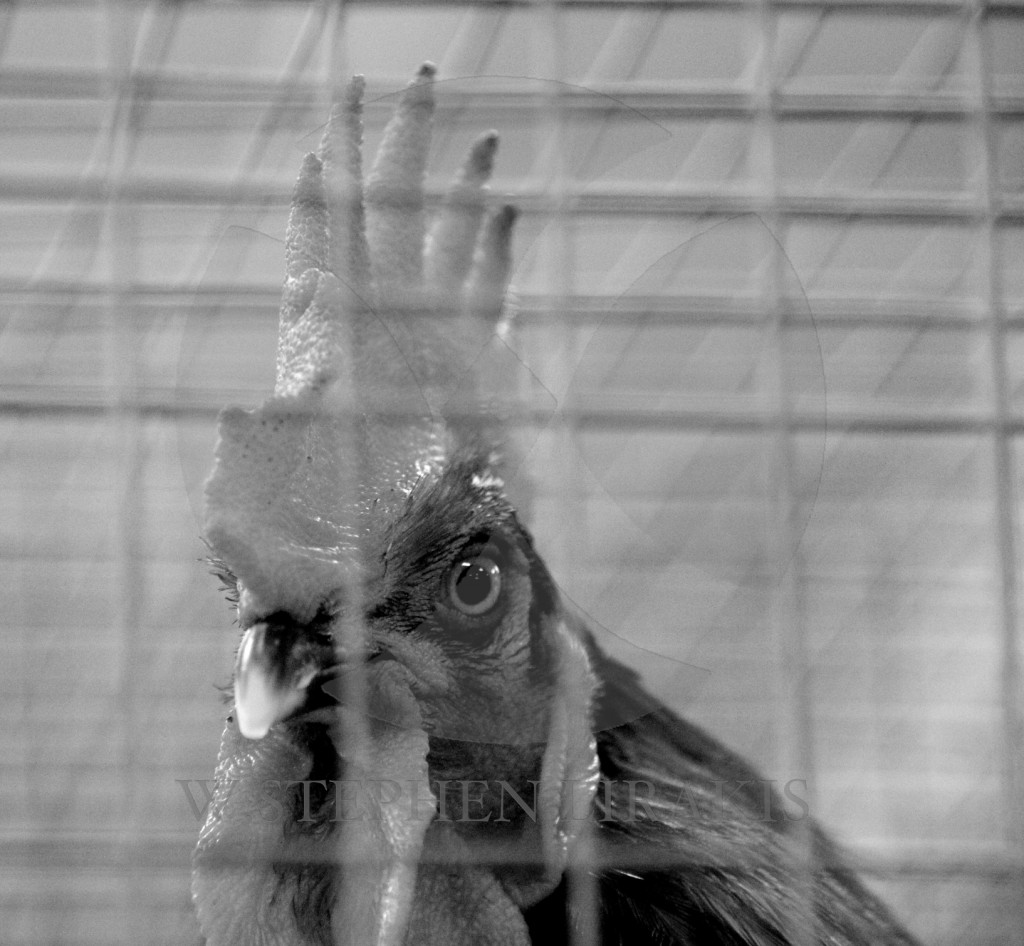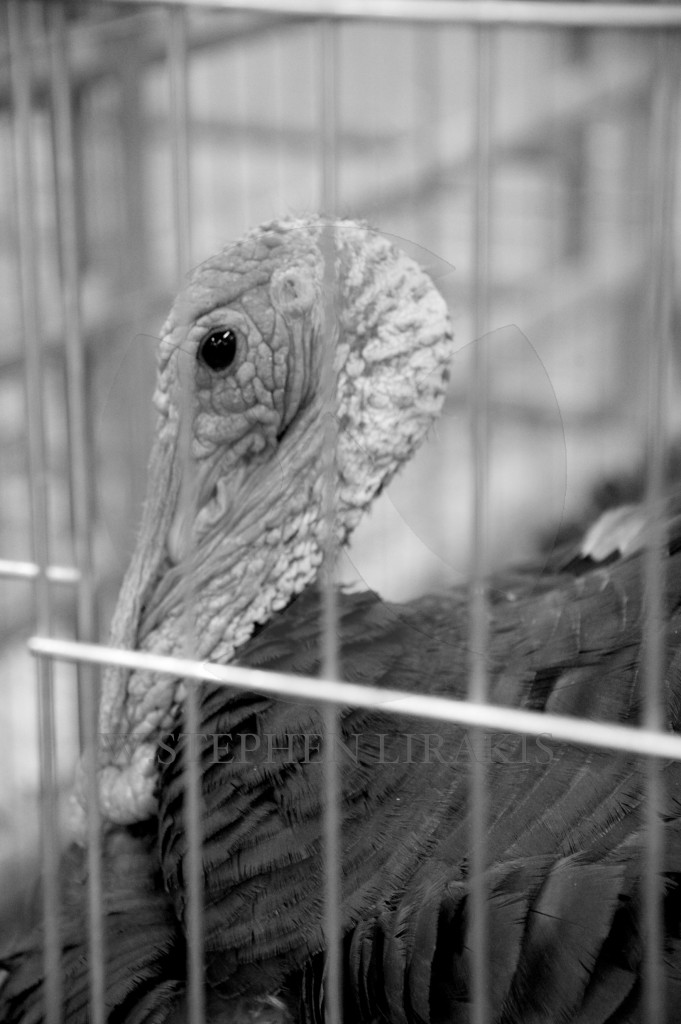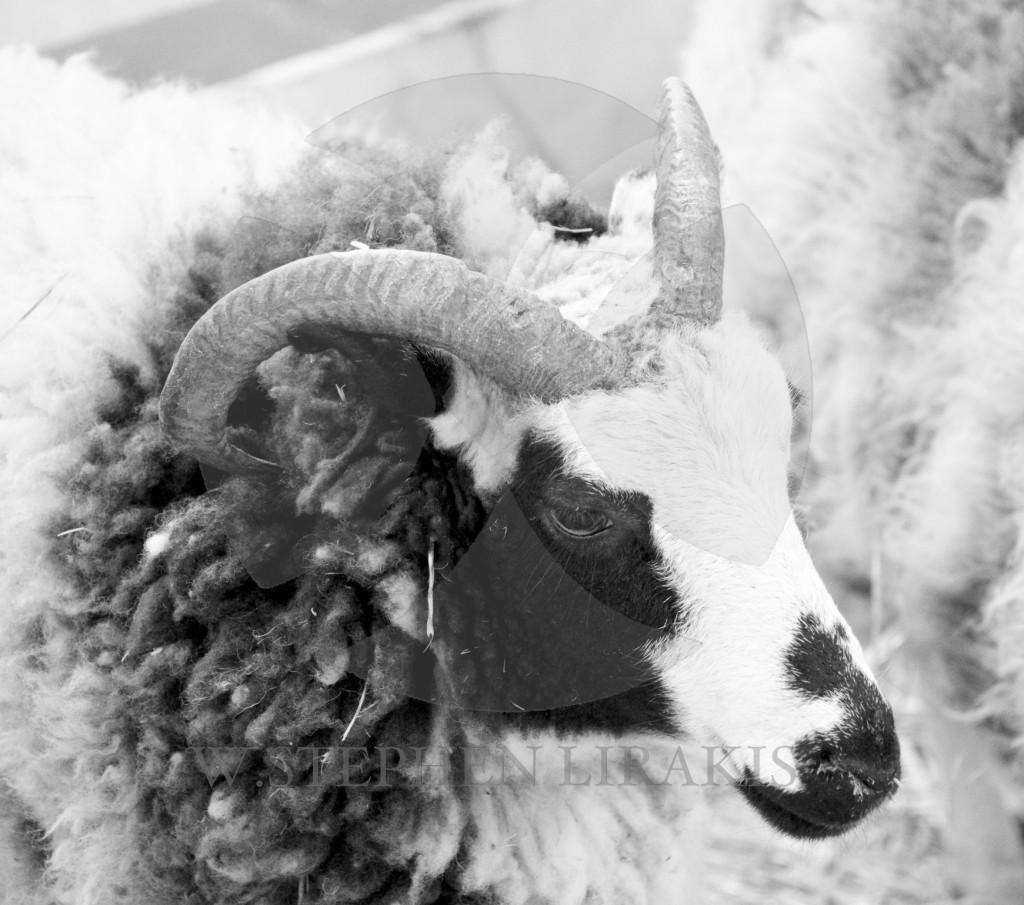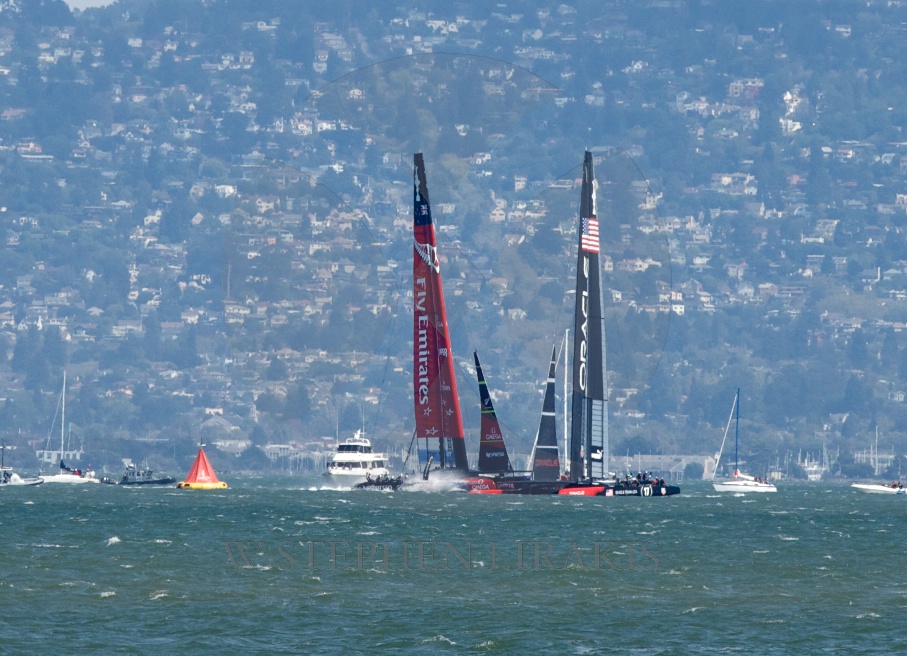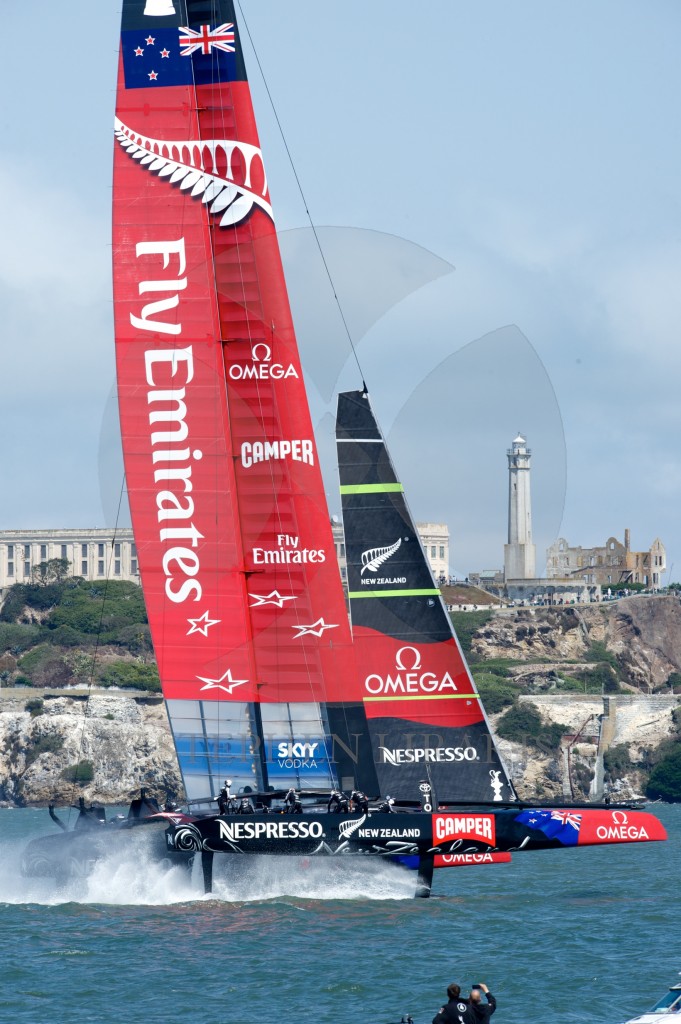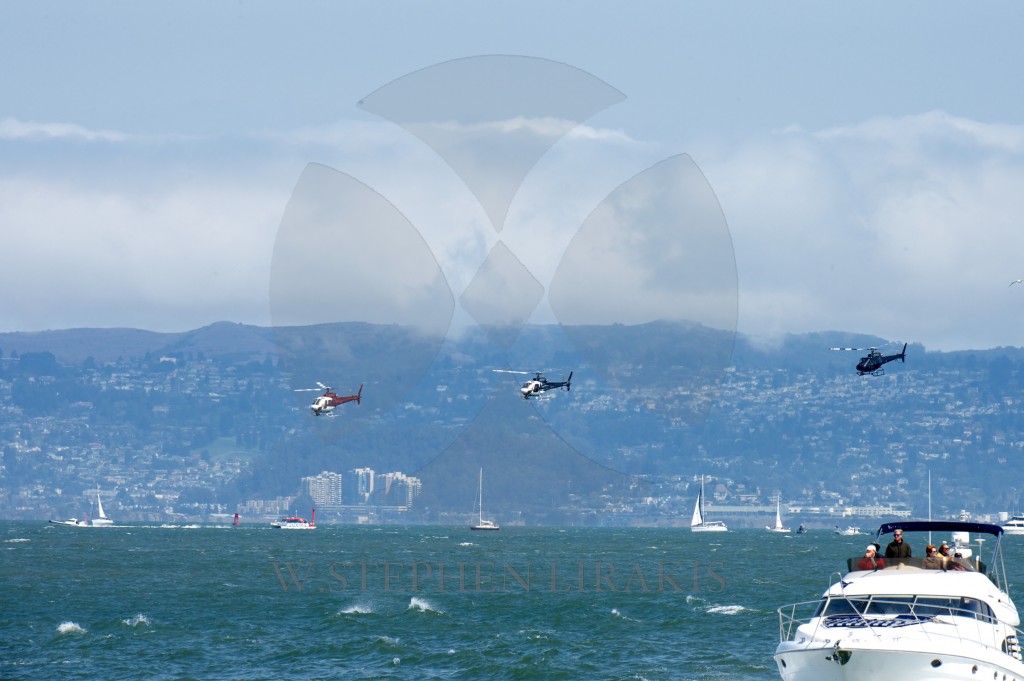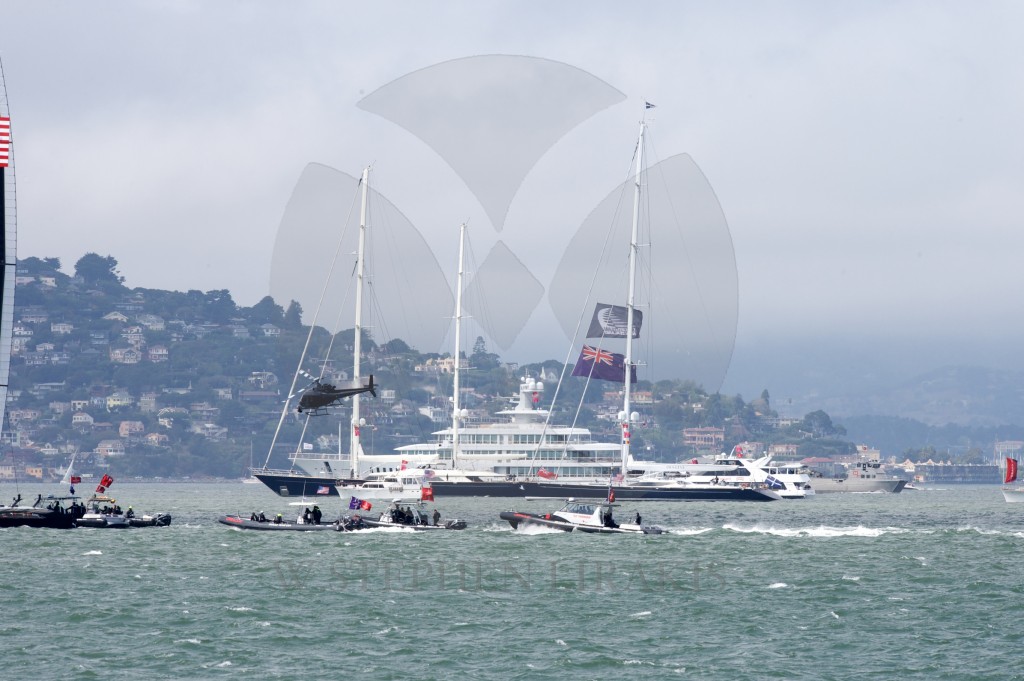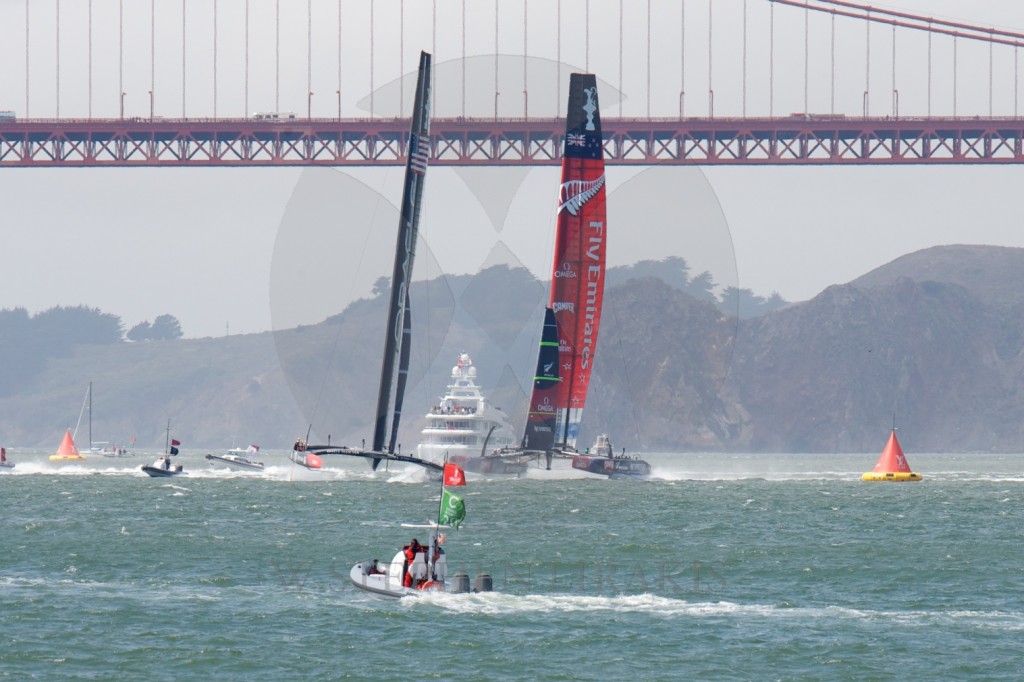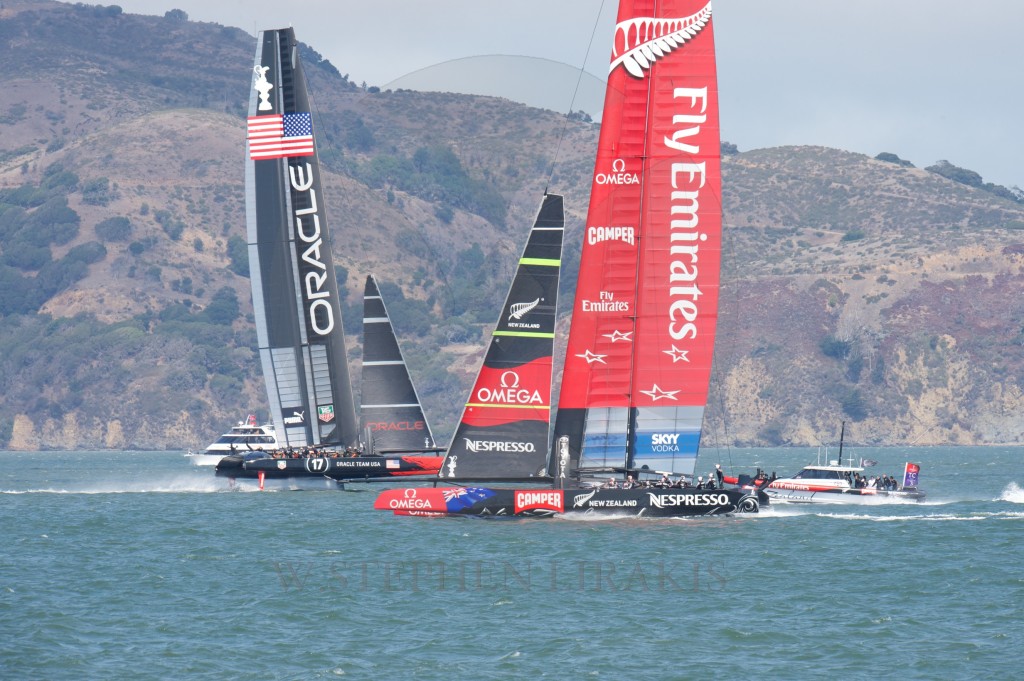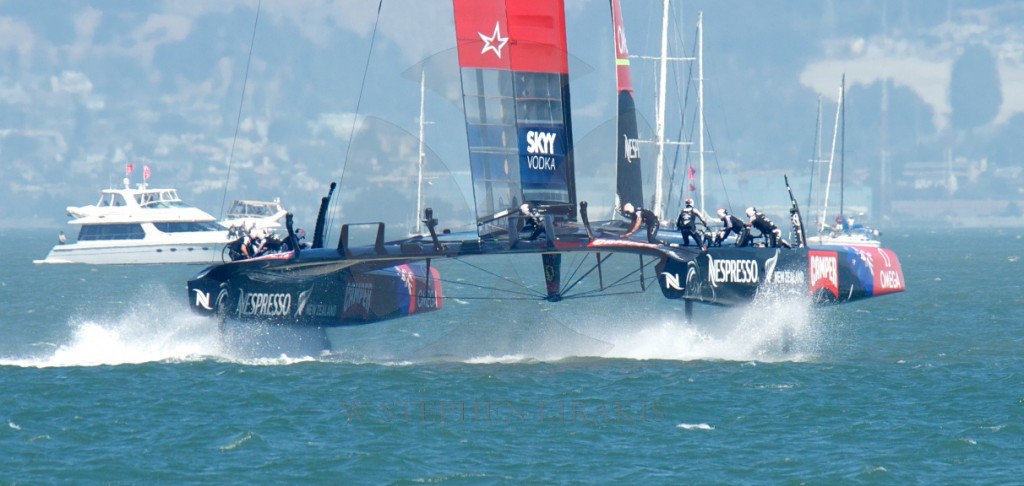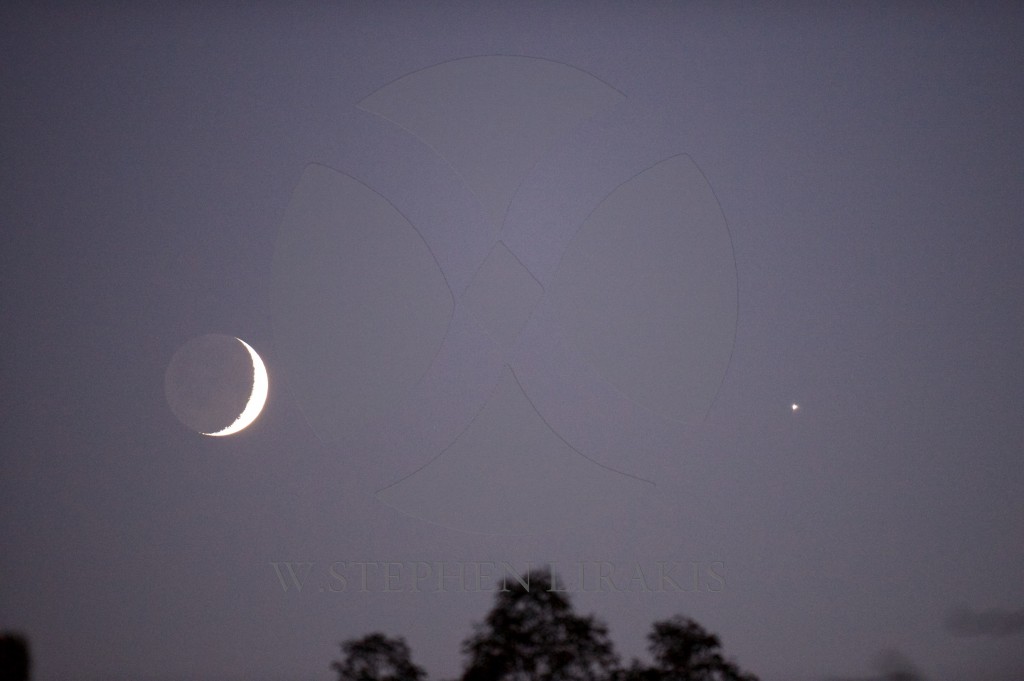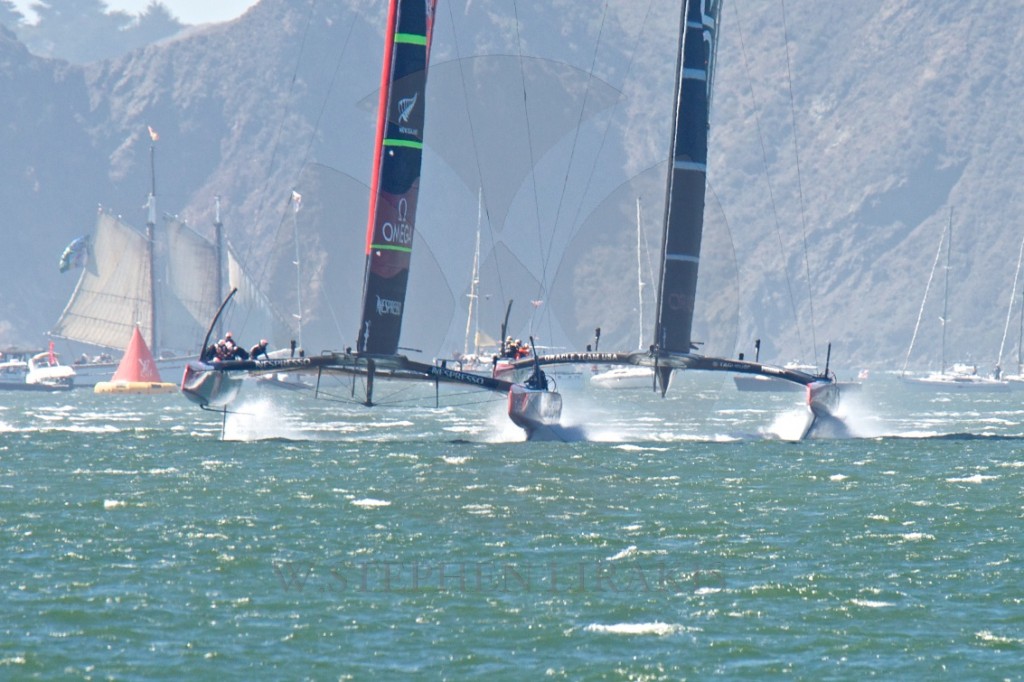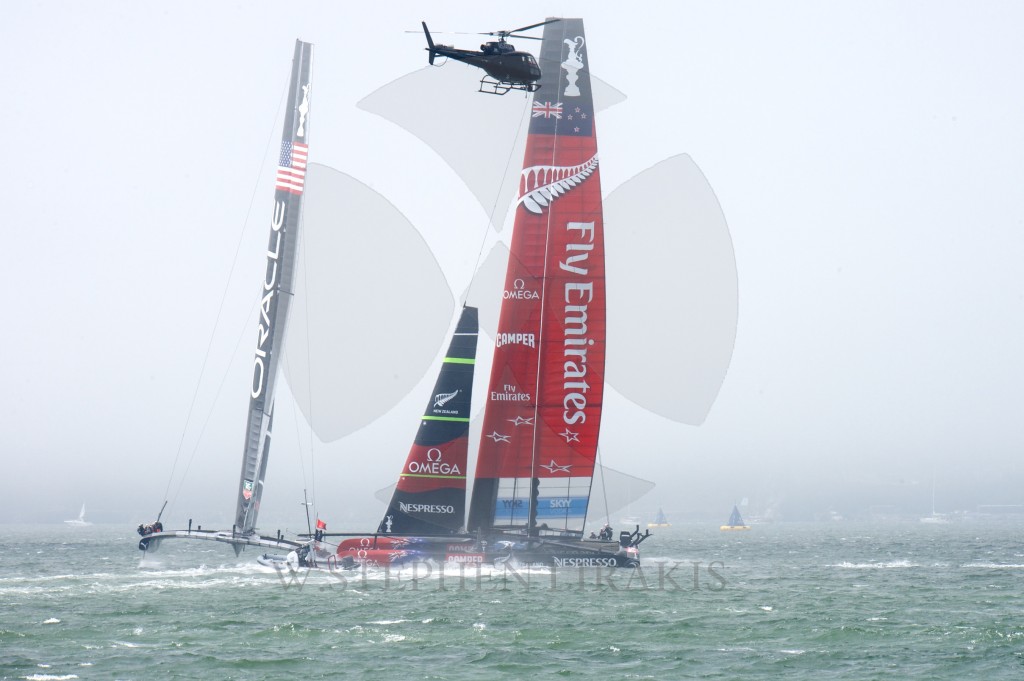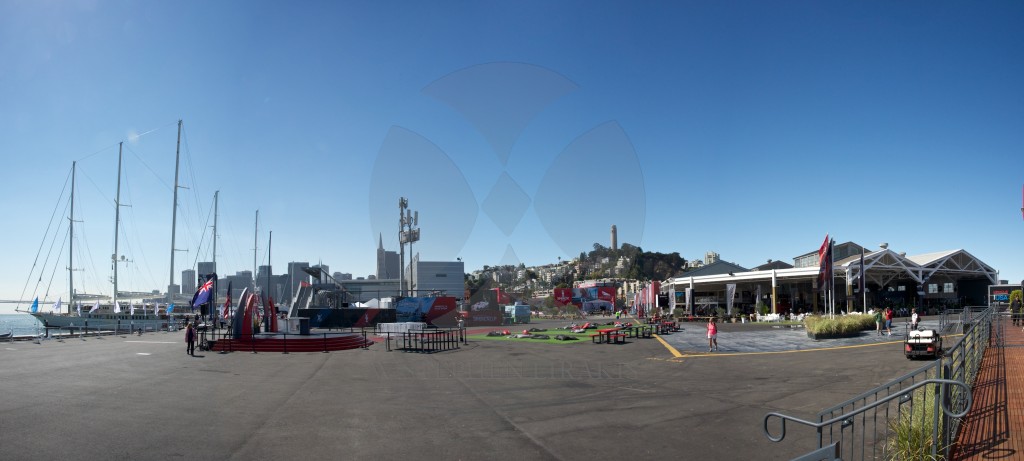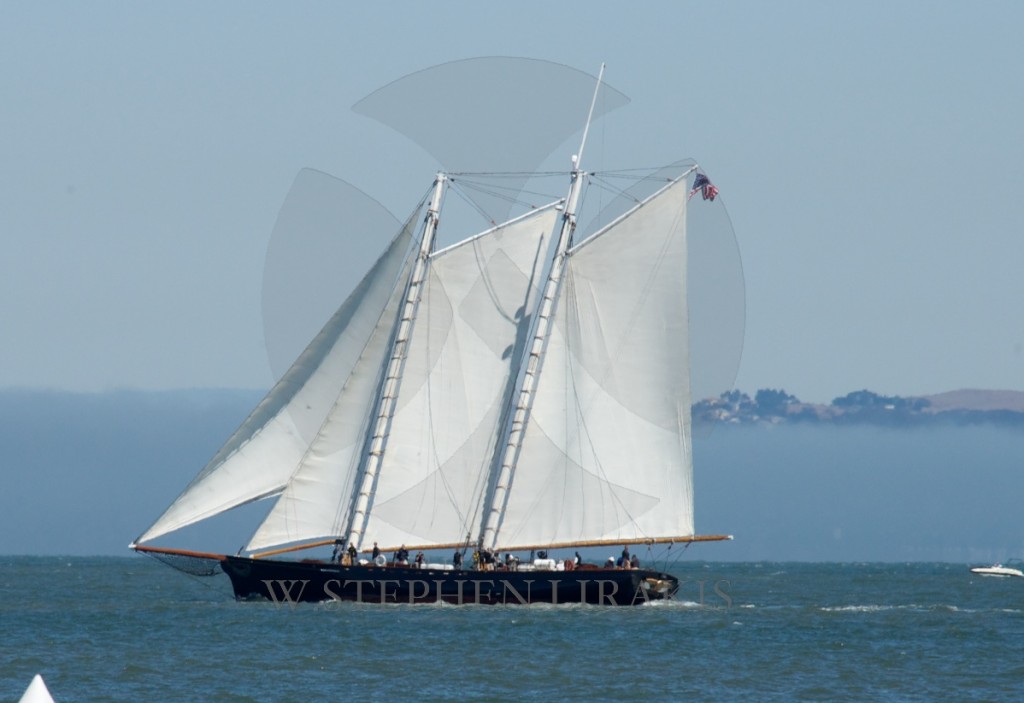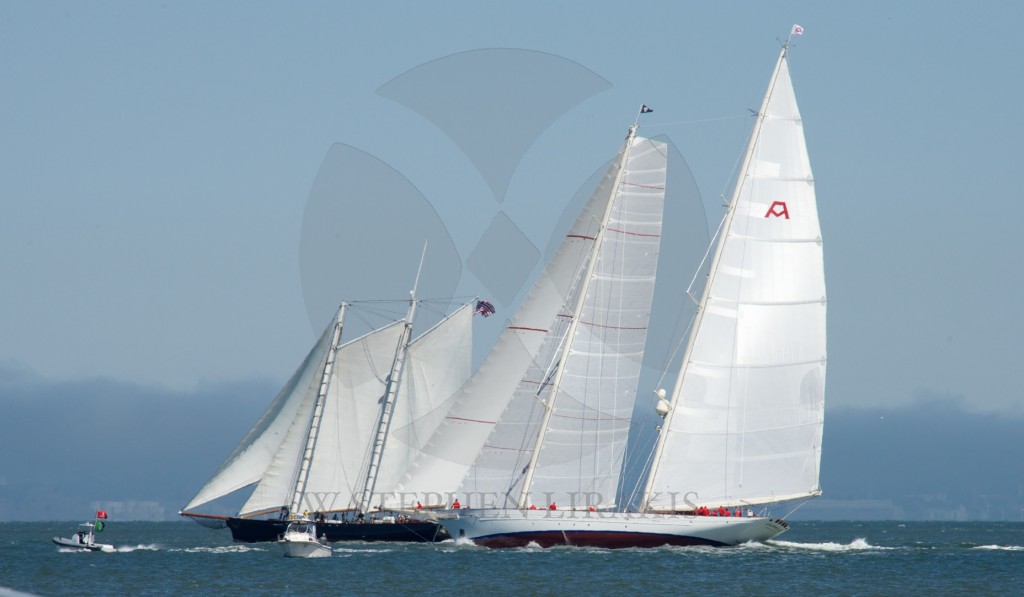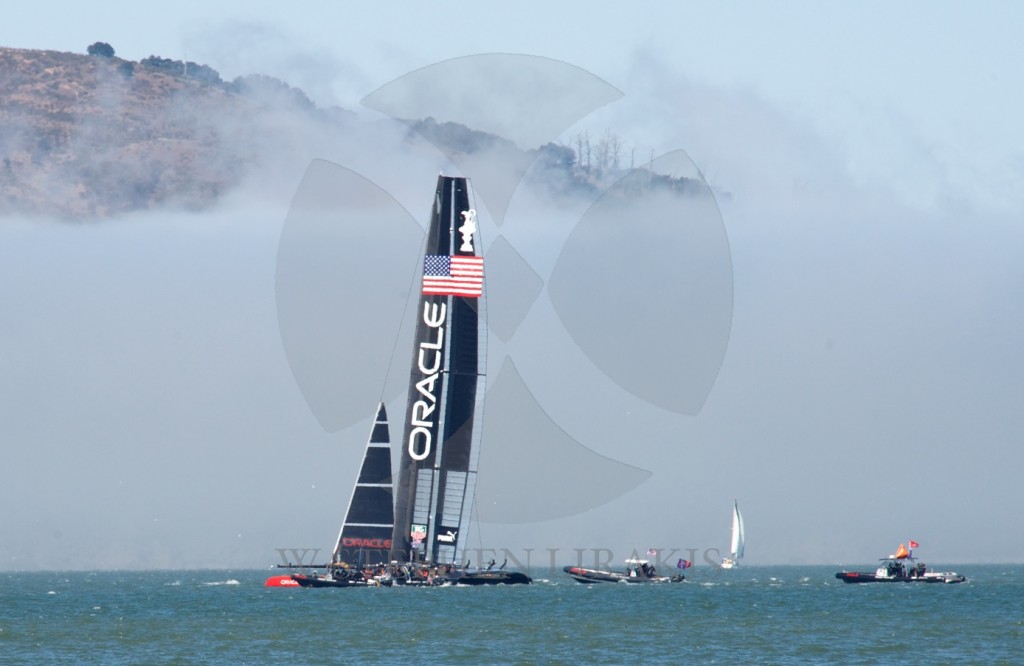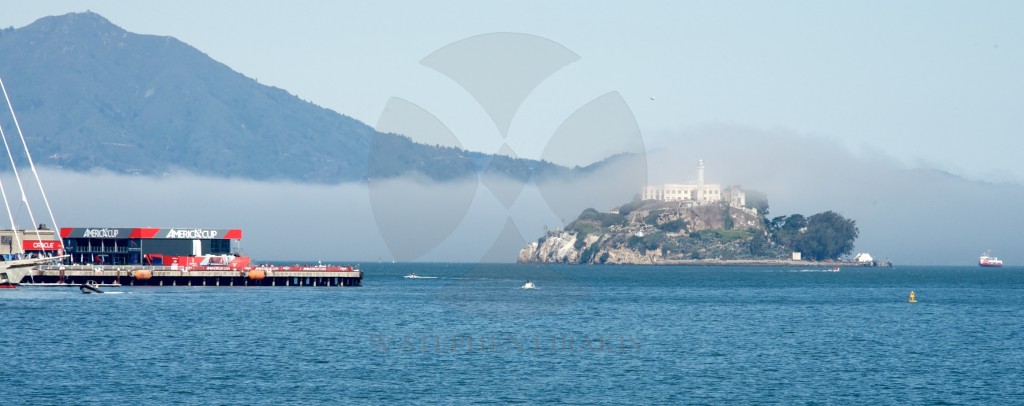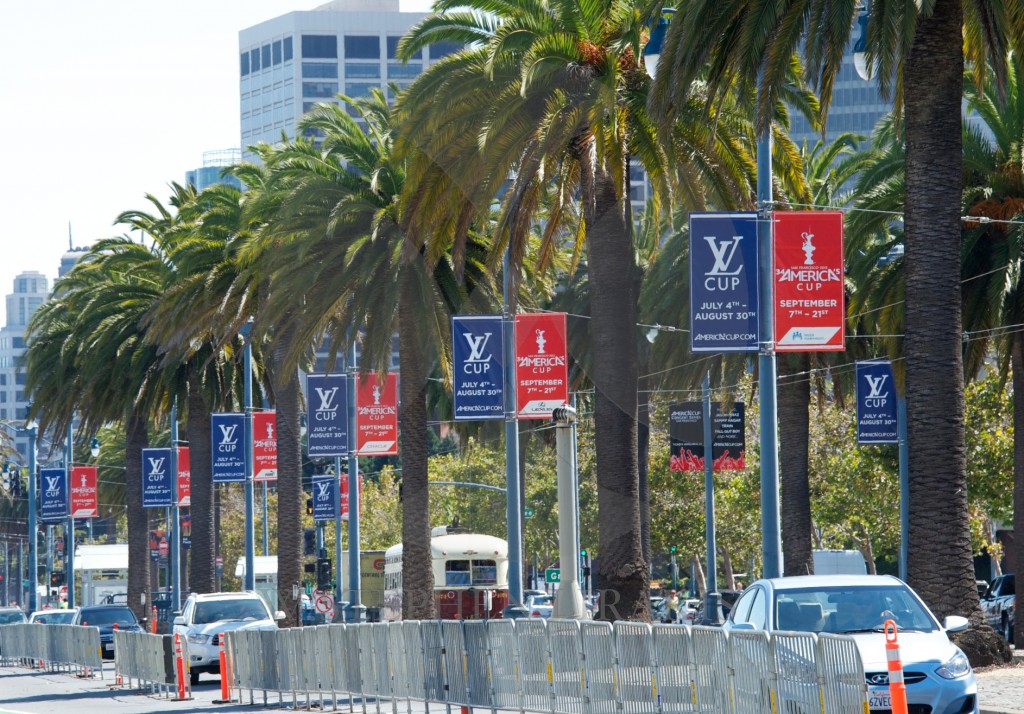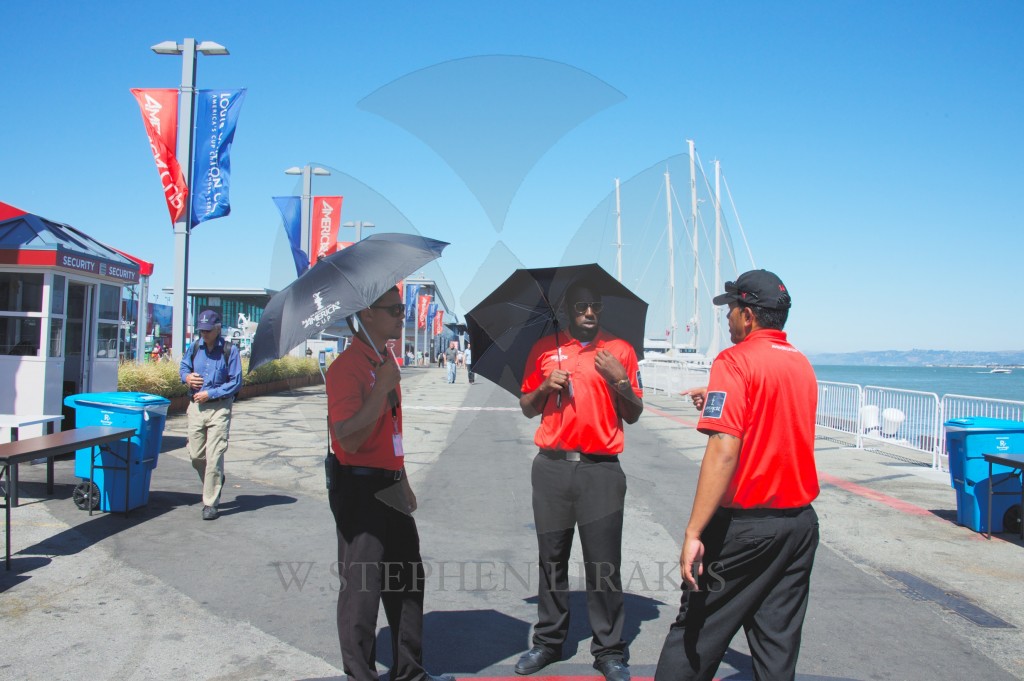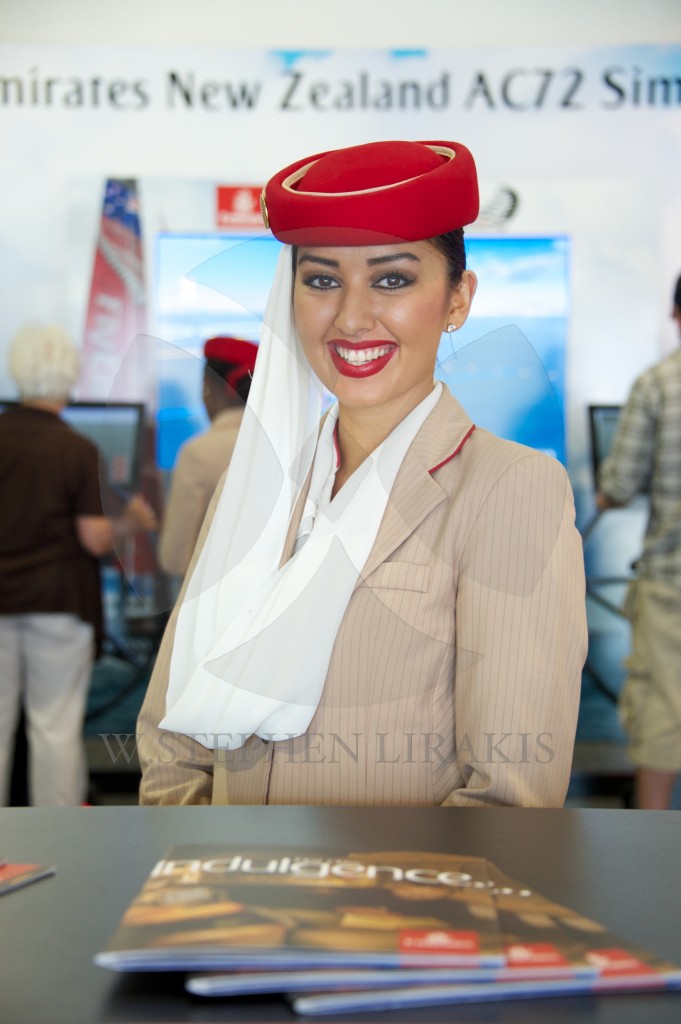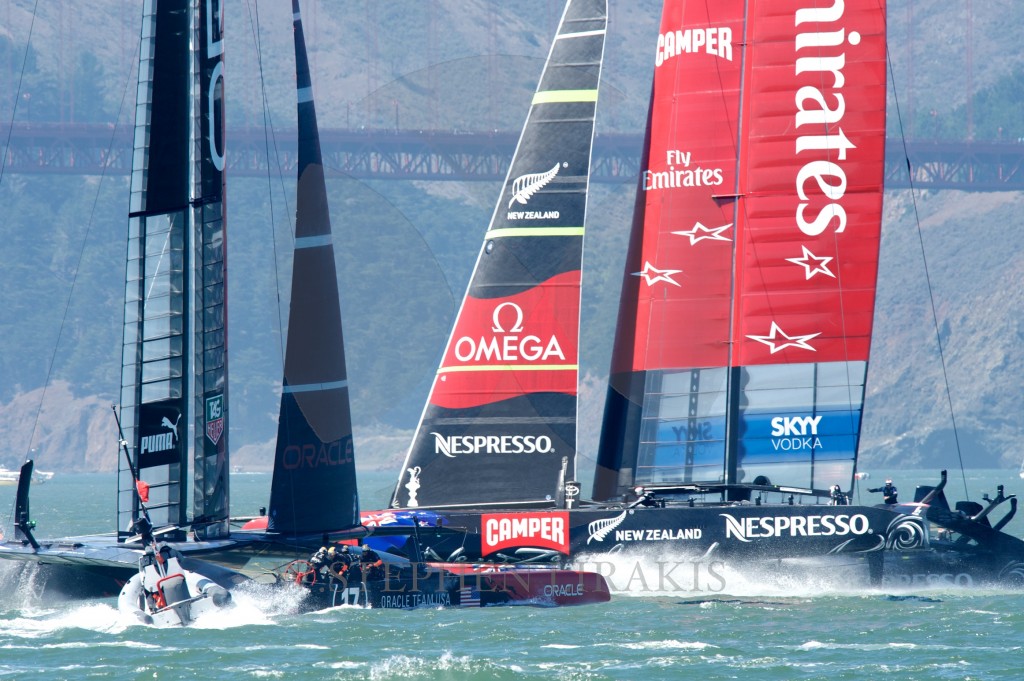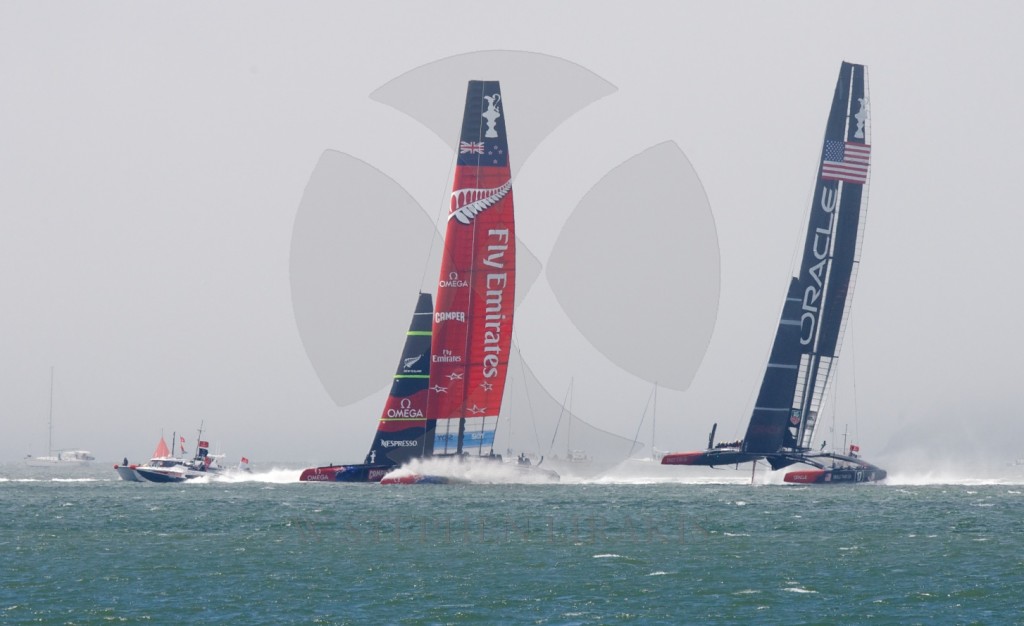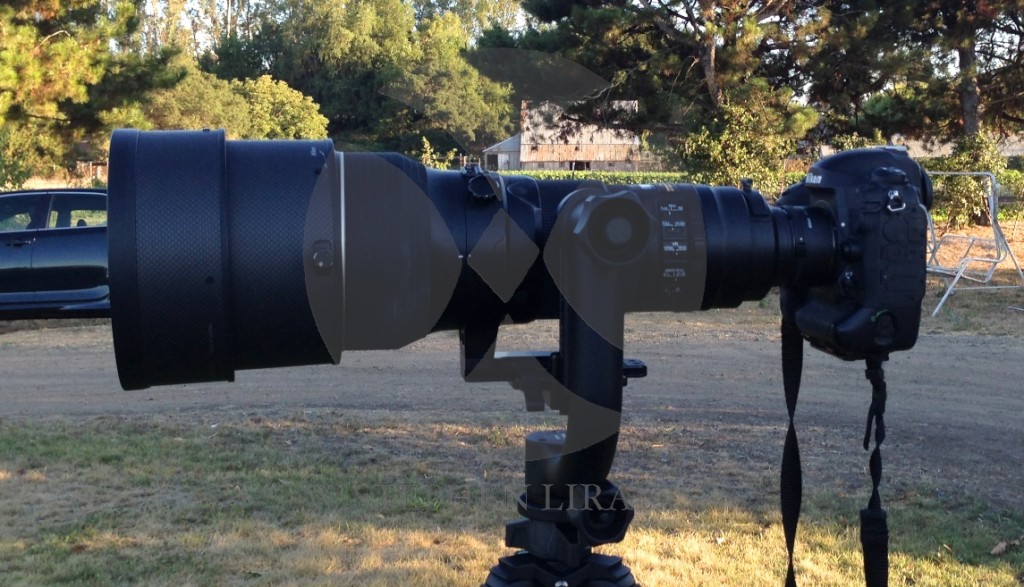
All modern sailboats have large mainsails, the mainsail trimmer is the single individual who is really driving the boat. He controls the horsepower. No less on a solid winged catamaran. Glen Ashby is starting to be recognized as the pivotal crew member he is.
Ben Ainslie will likely be aboard Oracle, replacing John Kostecki, who has become the sacrifical lamb for a boat with the “slows”
After Tuesday’s abbreviated race program, initiated by ORACLE TEAM USA playing its one and only “postponement card,” the 34th America’s Cup resumes today with Races 6 and 7.
ORACLE TEAM USA played its postponement card after losing Race 5 by 1:05, a stunning defeat that saw the defender leading at the leeward gate by 8 seconds.But Emirates Team New Zealand showed some serious wheels on the upwind leg and completed the 3-nautical-mile beat 85 seconds quicker than ORACLE TEAM USA.That turnaround clearly rattled an already shaken defender and led to the postponement card.
Yesterday in practice, ORACLE TEAM USA had four-time Olympic gold medalist on board filling the role of tactician John Kostecki, who has come under fire for the team’s perceived tactical errors. Kostecki isn’t solely responsible for the team being down 4-0 on the scoreboard and 4-to-minus 1 in the win column, but if Ainslie is aboard today (the crew lists are usually issued around 0900 PT) it will signal that ORACLE TEAM USA feels a shake-up is needed.
For Emirates Team New Zealand, the path forward remains simple. Gain at least a split of each day and in time it will reach its goal of winning the America’s Cup. The Kiwis need to win five races to ORACLE TEAM USA’s 10 to win the Cup.
“We go out there with the same approach every race, trying to win one race at a time,” said Kiwi skipper Dean Barker at Tuesday’s press conference. “There are no easy races. It’s full on. The guys did an incredible job getting the boat around the course. The temperament was fantastic onboard; we were behind around Mark 1 and stayed in the race, which is very promising.”
Although the Kiwis spent yesterday ashore, they no doubt reviewed videotape of ways to get off the start line better. ORACLE TEAM USA has won four consecutive starts, so Barker will be looking to improve on that today. And if he does, his “cool cat” status will increase triple-fold.
Today in America’s Cup history
September 12 is notable in America’s Cup history for five instances, including Race 3 of the 9th America’s Cup Match:
- 1895, Race 3, Valkyrie III (GBR) vs. Defender (USA): Lord Dunraven’s Valkyrie IIIdeclines to race the third race of the match and is labeled a “quitter” by the American Press. Valkyrie III crossed the start line, struck her racing colors and sailed for New York Harbor while Defender sailed the course to win the race and the match. Dunraven cited interference by spectator craft and dissatisfaction with the manner in which the New York Yacht Club was conducting the match for not continuing. It later emerged that Dunraven and his afterguard believed Defenderwas illegally ballasted. The NYYC held a hearing in December that year attended by Dunraven and his English Counsel, which exonerated Defender. One of the last surviving crew of Defender later disclosed in a recorded interview in 1974 thatDefender had pumped in and out illegal water ballast. (Mark J. Gabrielson, “Deer Isle’s Undefeated America’s Cup Crews,” History Press, Charleston, 2013, p109.)
- 1967, Race 1, Dame Pattie (AUS) vs. Intrepid (USA): Intrepid wins by 5:58.
- 1974: Race 2, Southern Cross (AUS) vs. Courageous (USA): Courageous wins by :51.
- 1983: Australia II (AUS) vs. Liberty (USA): The New York Yacht Club America’s Cup Committee votes 5-4 to not cancel the 25th America’s Cup Match in their belief that the winged-keel on Australia II had not been designed by an Australian national but by Dutch nationals at a Dutch tow tank used to test models for the Australian challenge, which was hotly disputed by the Australian challenger.
- 2004: After the conclusion of the first America’s Cup Act in Marseille, France, a storm producing winds in excess of 65 knots hits the boatyard where the ACC sloops are stored in cradles awaiting de-rigging for shipping to the next event. The storm blew over Alinghi’s, BMW Oracle’s and Team New Zealand’s IACC yachts, damaging all three yachts with Team New Zealand’s yacht suffering the worse damage.


